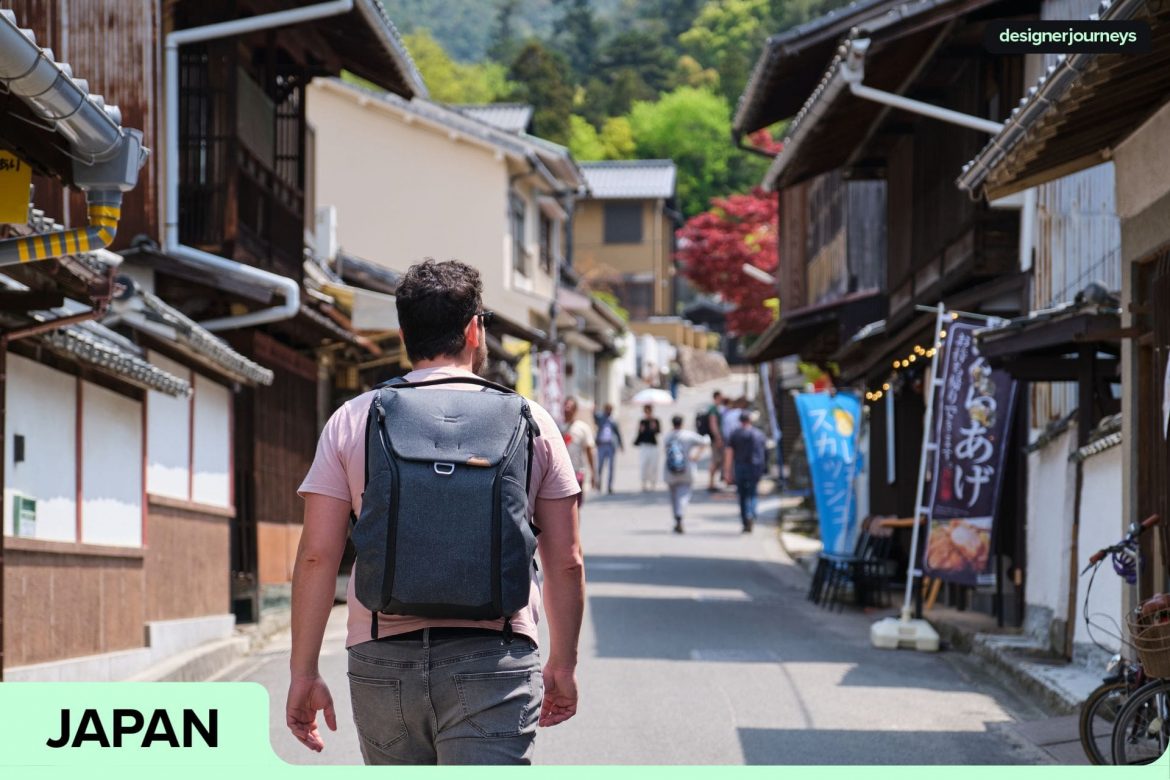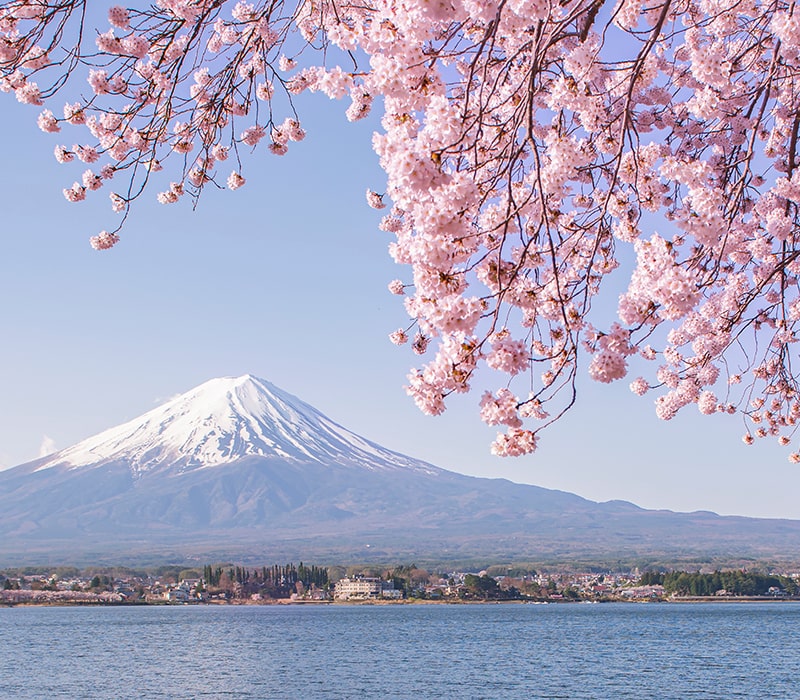Hiroshima stands as one of Japan’s most captivating major cities, known for its resilience, world-changing history, and natural beauty. If you’re planning a Japan trip, this Hiroshima travel guide invites you to uncover every highlight, from the atomic bomb dome to the tranquil shukkei en garden—all seamlessly woven into your perfect Hiroshima itinerary.
Whether you’re visiting as a solo traveller, with family, or as a couple, you’ll find a blend of historic sites, luxurious experiences, and local insight designed to inspire, reassure, and create lasting memories. This guide covers both Hiroshima City and the broader Hiroshima Prefecture, introducing you to essential places and local treasures.
Post Contents
- When to Visit Hiroshima
- Top 15 Things to do in Hiroshima for a seamless trip
- 2. Atomic Bomb Dome (A-Bomb Dome)
- 3. Hiroshima Peace Memorial Park
- 4. Hiroshima Castle
- 5. Shukkei-en Garden
- 6. Hiroshima Station
- 7. Try the famous Hiroshima Style Okonomiyaki
- 8. Itsukushima Shrine & Floating Torii Gate
- 9. Sandankyo Gorge
- 10. Saijō Historic Breweries
- F.A.Qs
- Design Your Own Hiroshima Journey
When to Visit Hiroshima
One of the most inspiring aspects of Hiroshima is how each season transforms the city, offering new reasons to visit, explore, and design your own personal journey. Whether you crave the soft glow of cherry blossoms, the vibrant festivities of summer, the golden foliage of autumn, or the quiet, contemplative beauty of winter, Hiroshima’s climate and cultural calendar promise unforgettable moments.
Let’s break down what each season brings and how you can craft the ideal Hiroshima itinerary:
Spring (March–May)
Spring in Hiroshima City is synonymous with cherry blossoms—and the entire region celebrates this fleeting beauty with gusto. As the weather warms, sakura trees bloom along riverbanks, in castle grounds, and at nearly every open space. The most magical spots include the moat of Hiroshima Castle, Shukkei-en Garden, and the scenic paths of Peace Memorial Park.
Key Highlights:
- Cherry Blossoms: The highlight of any Japan trip in spring, these delicate flowers attract many tourists, families, and couples alike. The bloom typically peaks in late March to early April.
- Seasonal Cuisine: Local food stalls serve sakura-themed treats and fresh, seasonal seafood from the Seto Inland Sea.
- Outdoor Activities: Enjoy riverside picnics, strolls through the city centre, and day trips to Miyajima Island—where you’ll see deer grazing under pink blossoms and the floating torii gate reflected on the water.
Summer (June–August)
Summer in Hiroshima Prefecture is warm, humid, and alive with energy. The city buzzes with festivals and fireworks, while the surrounding natural beauty comes alive. The inland sea sparkles under the summer sun, and Miyajima Island and Okunoshima Island (Rabbit Island) become prime destinations for beach outings and wildlife encounters.
Key Highlights:
- Hiroshima Flower Festival: Held in May along Peace Boulevard, this event features parades, music, and food stalls, celebrating the city’s rebirth and creativity.
- Island Adventures: Take a luxury day trip to Miyajima Island for kayaking or a private yacht tour on the Seto Inland Sea. For a playful escape, visit Rabbit Island—a small island filled with friendly rabbits and fascinating WWII history.
- Night Illuminations: Major monuments like the Atomic Bomb Dome and Itsukushima Shrine are illuminated, offering magical evening views.
Cultural Note: During summer festivals, locals wear yukata (cotton kimono) and enjoy street food—join in for a truly local experience!
Autumn (September–November)
Autumn paints Hiroshima in rich shades of red, gold, and orange. The crisp air and vivid scenery make this season ideal for outdoor explorations and cultural immersion.
Key Highlights:
- Foliage Viewing: Head to Sandankyo Gorge for hiking paths surrounded by fiery autumn leaves—this natural wonder is at its most stunning from late October through November.
- Castle Grounds: The grounds of Hiroshima Castle and Shukkei-en Garden are blanketed in colour, providing breathtaking photo opportunities.
- Sake Season: Autumn marks the start of sake brewing in Saijō’s historic breweries. Join a private tasting tour and experience the rich flavours of freshly crafted sake.
Expert Tip: If you have a Japan Rail Pass, take a short trip to Saijō for a guided brewery tour, pairing local cuisine with world-class sake.
Winter (December–February)
The winter months in Hiroshima are peaceful and contemplative, offering clear skies, gentle sunlight, and far fewer tourists. It’s the best time for travellers who appreciate a slower pace and crave authentic, local encounters.
Key Highlights:
- Tranquil Sites: The Hiroshima Peace Memorial Park and the Atomic Bomb Dome take on an even greater sense of profundity in the stillness of winter. Museums and memorials are less crowded, allowing deeper reflection on the city’s journey from World War II to lasting peace.
- Oyster Season: Hiroshima is renowned for its oysters, and the freshest catch is found in winter. Enjoy them grilled at food stalls or prepared in upscale local restaurants.
- Onsen and Ryokan: Warm up in a luxurious hot spring inn—consider booking a room on Miyajima Island for unbeatable views and seamless service.
- Winter Events: While more subdued, you’ll find illuminations at landmarks, and some shrines hold New Year’s celebrations with traditional rituals.
No matter the season, Hiroshima reveals new layers of history, culture, and natural beauty. With the right timing, expert guidance, and seamless planning, your visit will be as comfortable as it is inspiring.
Top 15 Things to do in Hiroshima for a seamless trip
1. Hiroshima Peace Memorial Museum
Begin your journey at the Hiroshima Peace Memorial Museum, located at the heart of Hiroshima Peace Memorial Park. Here, exhibits chronicle the destructive power of the atomic bomb that fell in August 1945, forever changing the course of World War II and shaping the global movement for world peace and the abolition of nuclear weapons.
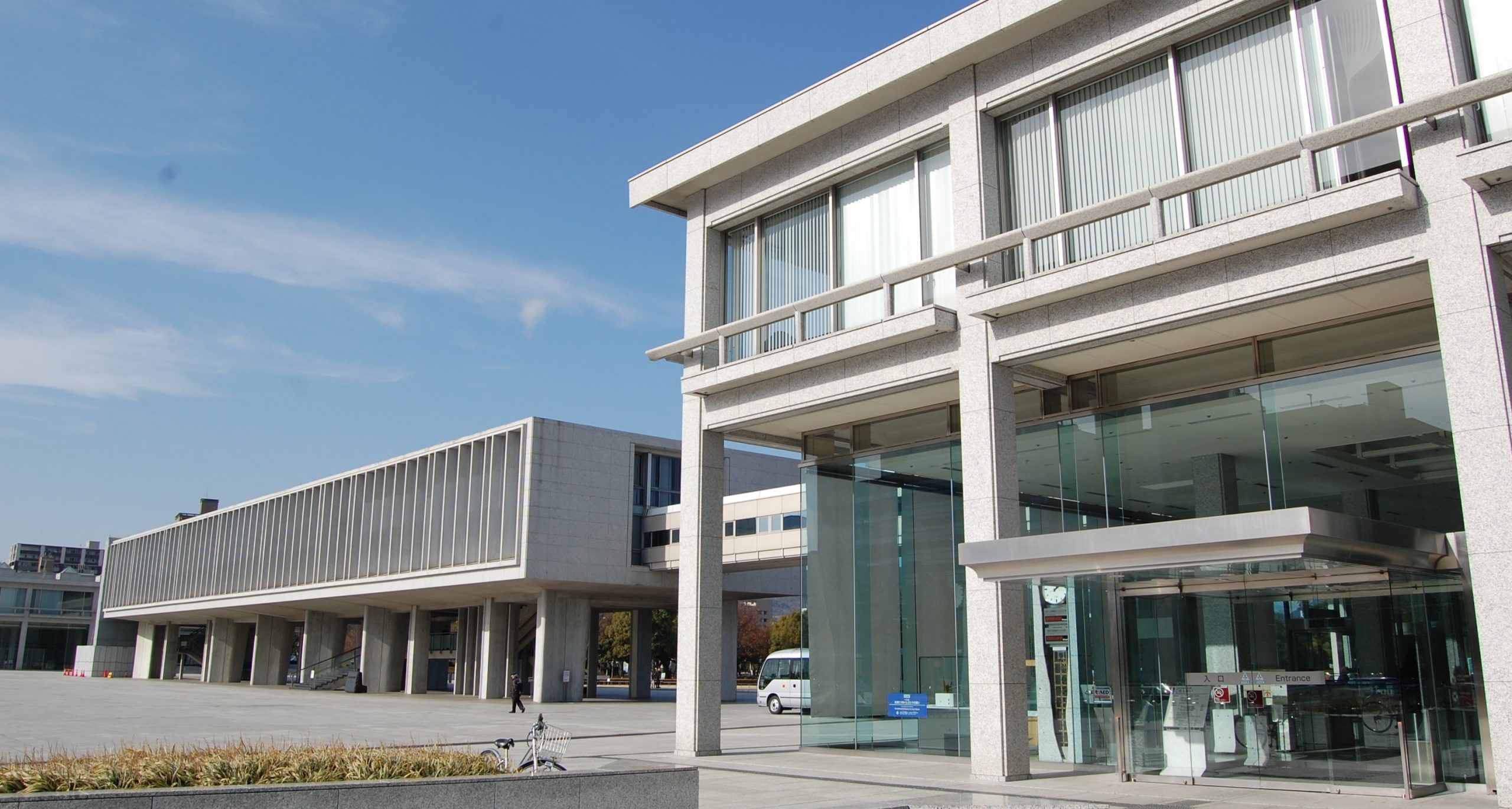
Hiroshima Peace Memorial Museum.
Image source: Hiroshima Peace Memorial Museum
Inside the museum, you’ll encounter powerful displays, stories of lives lost, and messages of hope. The focus is not just on the dark history of Hiroshima, but on recovery, resilience, and the city’s ongoing commitment to lasting peace.
Expert Tip: Plan to visit early for a reflective, quiet experience. Many tourists recommend spending at least two hours here. For deeper insight, a private guide can be arranged to share local stories and personal perspectives.
Cultural Note: Please maintain silence, especially near the most sensitive displays, and respect photography rules.
2. Atomic Bomb Dome (A-Bomb Dome)
Just steps away from the museum, you’ll find the iconic Atomic Bomb Dome—also called the A-Bomb Dome or the Prefectural Industrial Promotion Hall. Preserved as a national monument and recognised as a UNESCO World Heritage Site, it stands in the city centre as a stark reminder of the atomic bomb’s impact.
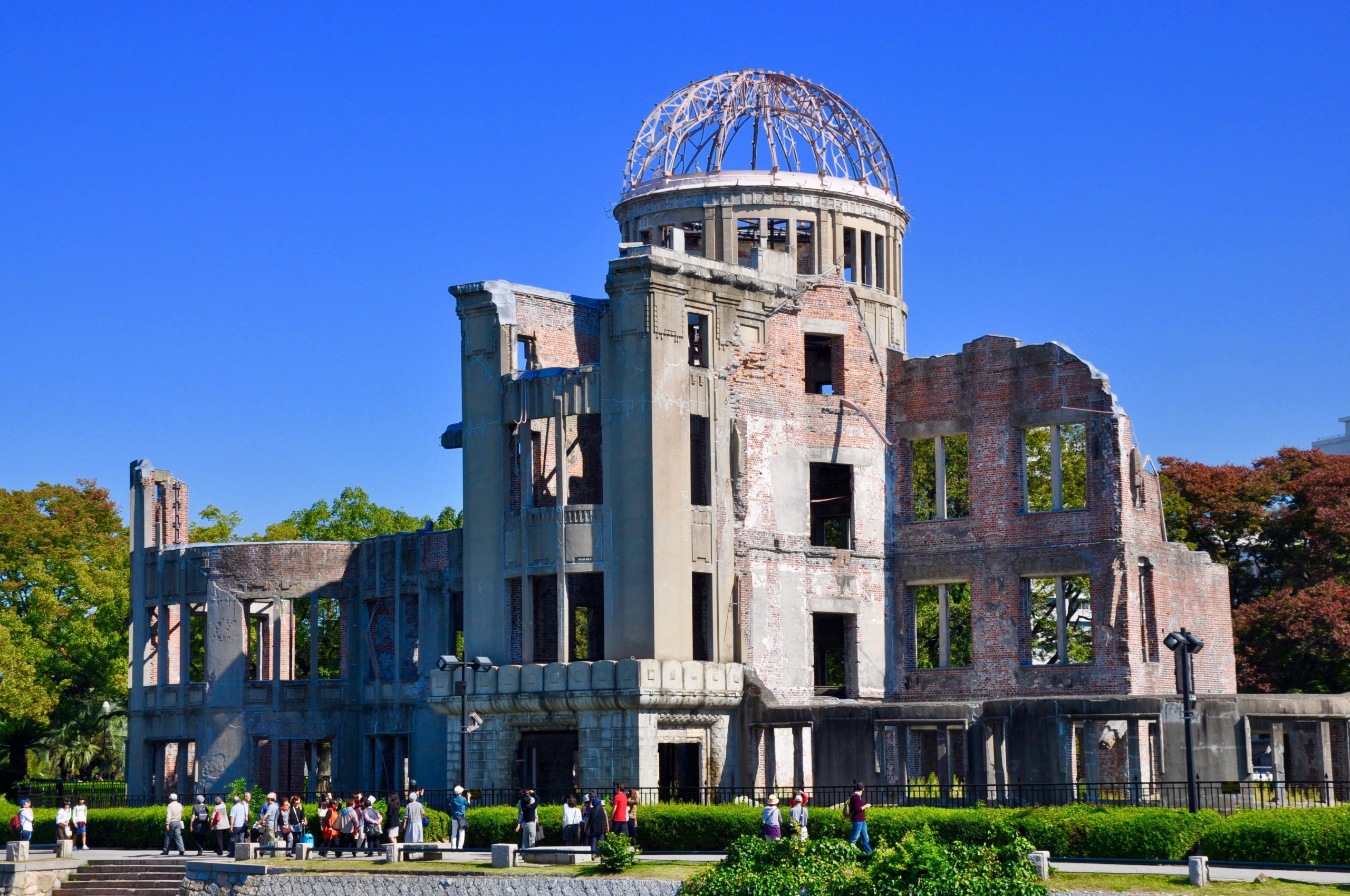
Atomic Bomb Dome in Hiroshima.
Expert Tip: Visit Hiroshima’s A-Bomb Dome at sunset for a moving, beautifully lit scene. Evening is often quieter, and the soft lighting against the ruins is a must-capture photo opportunity.
3. Hiroshima Peace Memorial Park
Peace Memorial Park—sometimes called Hiroshima Peace Park—is more than an open space. It is a sanctuary of remembrance and hope, designed to honour the victims and inspire the pursuit of world peace.
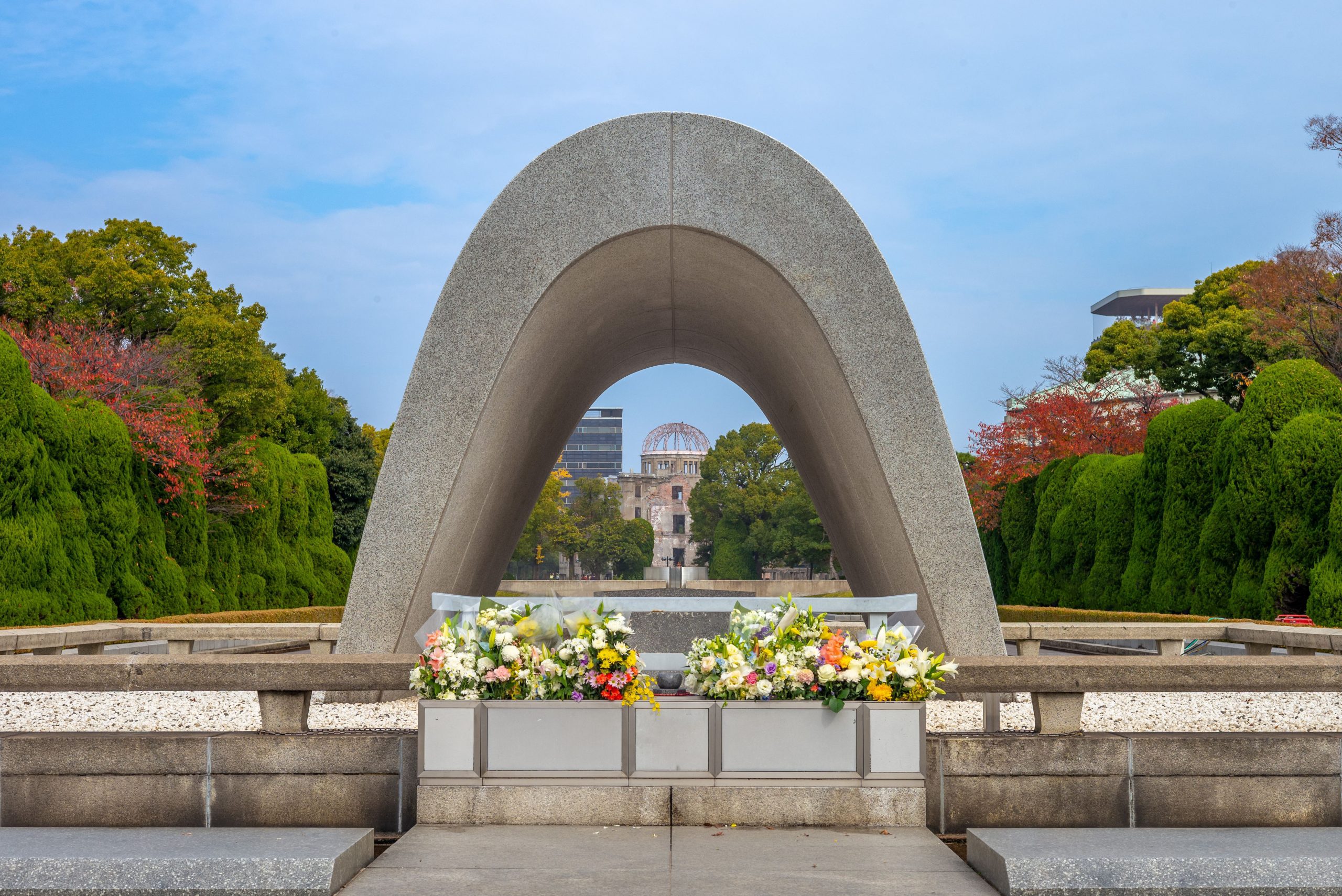
Cenotaph at Hiroshima Peace Memorial Park in Japan.
Here you’ll find the Children’s Peace Monument, inspired by the story of Sadako Sasaki and the legend of a thousand cranes. The Central Pond offers peaceful views, while sculptures, the Peace Memorial, and the Peace Boulevard all invite quiet reflection.
Expert Tip: Book a local expert to guide you through the park and share stories behind the memorials. This is also a great spot to observe schoolchildren offering thousand cranes as prayers for peace.
4. Hiroshima Castle
In the heart of Hiroshima City, the reconstructed Hiroshima Castle rises above the castle grounds—a striking blend of feudal elegance and modern renewal. Once the home of a powerful feudal lord, the current castle is an impressive museum featuring samurai armour, swords, and artefacts from the Edo period and Meiji era.
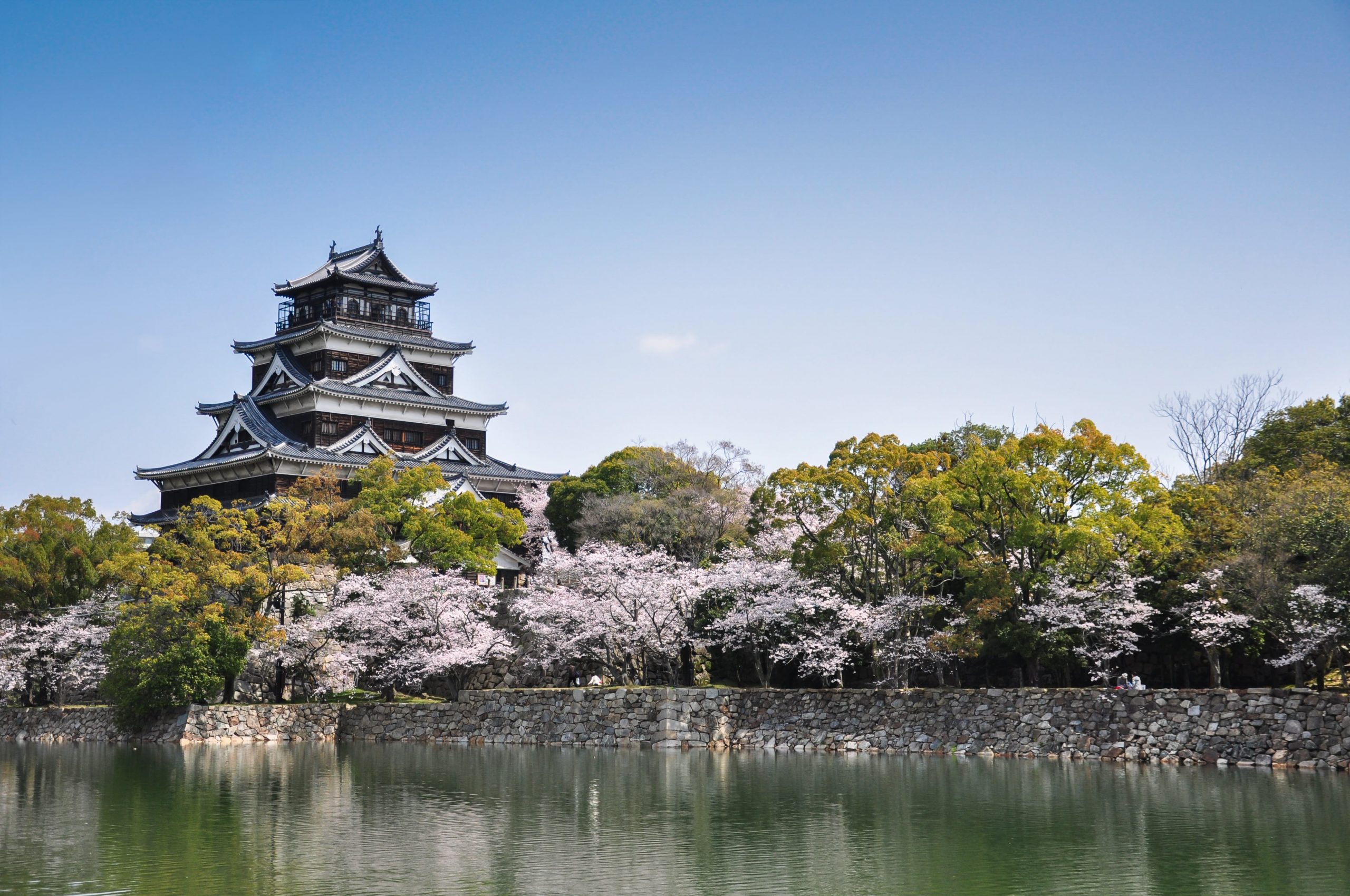
Hiroshima castle in spring.
The castle grounds are a highlight during cherry blossom season, offering stunning views of pink petals reflecting on the moat.
Expert Tip: Spring is the best time to visit Hiroshima Castle. Arrange a luxury picnic under the blossoms or a guided historical walk for the full experience.
5. Shukkei-en Garden
Shukkei-en Garden is a beautifully landscaped retreat in the city centre, created during the Edo period to mimic the natural beauty of the inland sea and mountains. Meandering hiking paths, koi-filled ponds, and traditional teahouses offer a peaceful escape.
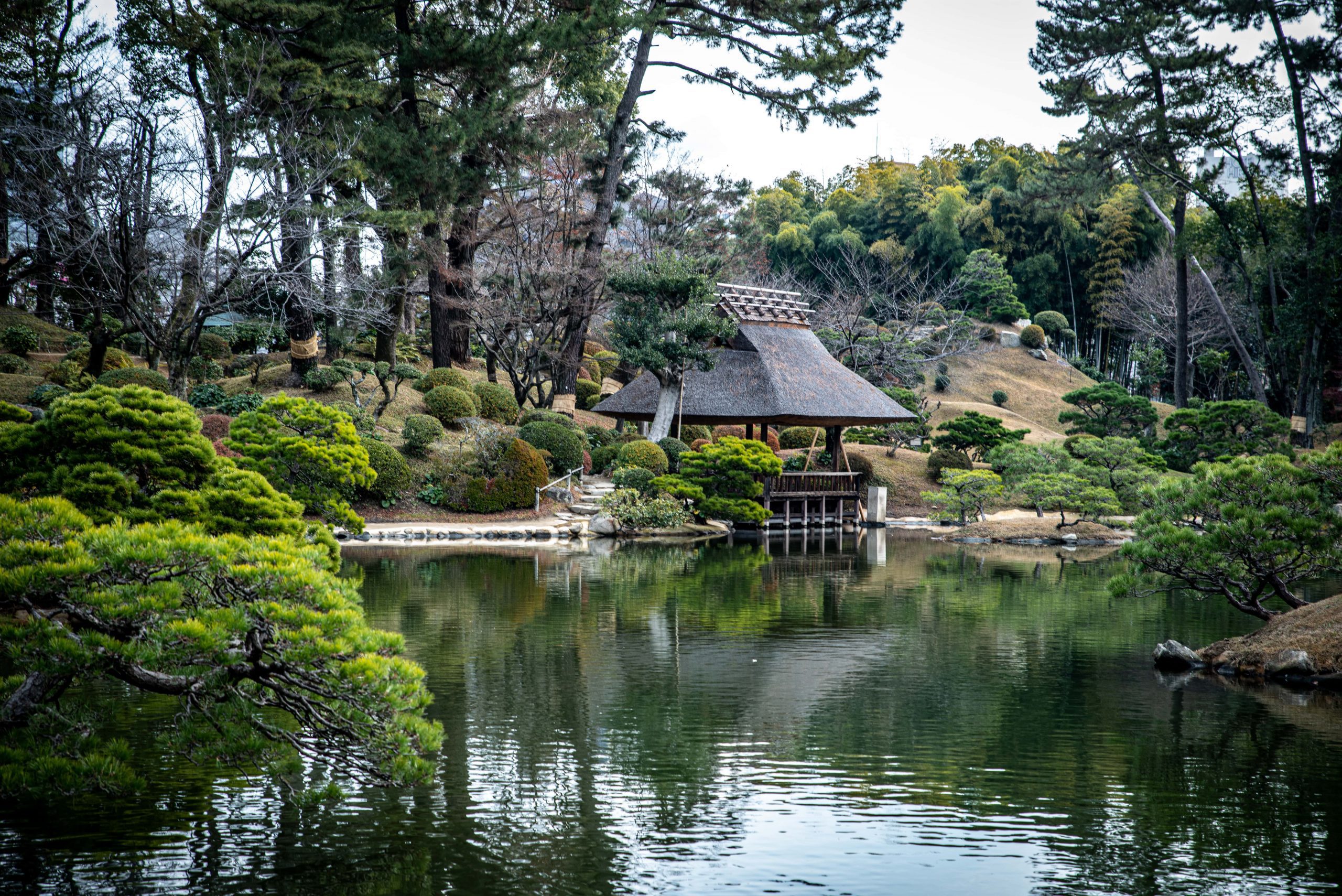
Hiroshima Prefecture’s famous garden Shukkeien.
Expert Tip: Visit during the autumn for vibrant foliage, or the winter months when the garden is quieter and more contemplative. Private tea ceremonies can be arranged for a personalised, cultural experience.
6. Hiroshima Station
Hiroshima Station is your main hub for arrival and departure, easily accessed by the Japan Rail Pass (JR Pass) and offering unlimited rides on the Shinkansen between Japan’s major cities. Luxury transfers, public transportation, and private guides make navigating the city and Hiroshima Prefecture effortless.
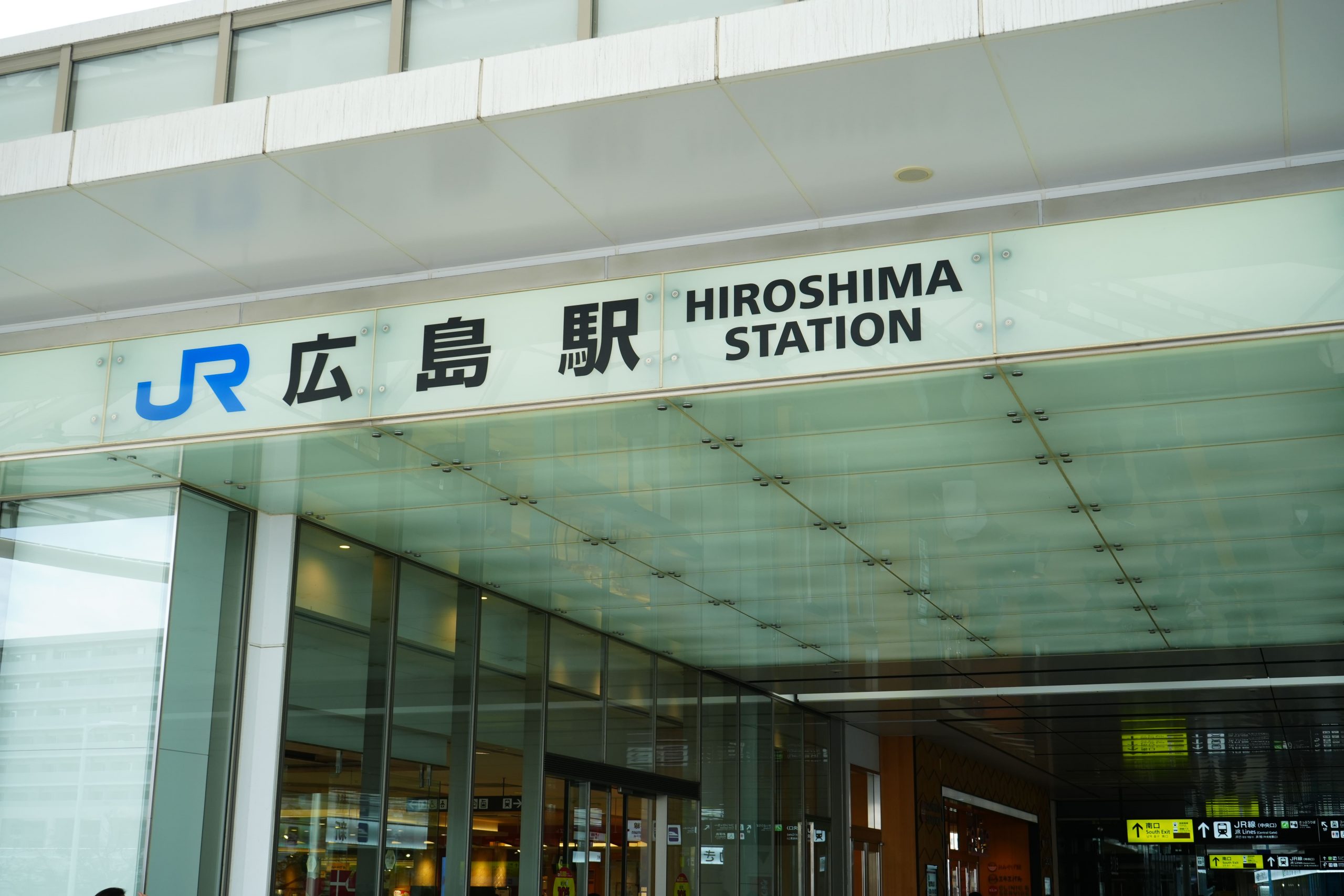
Hiroshima Train Station. Credit: Eric Akashi – stock.adobe.com
Expert Tip: Explore the station’s gourmet offerings—try a local ekiben (bento box) crafted from regional specialities before your next day trip.
7. Try the famous Hiroshima Style Okonomiyaki
One of the most fun things to do in Hiroshima is to savour Hiroshima-style okonomiyaki. This famous dish—sometimes called Hiroshima okonomiyaki—layers noodles, cabbage, and fresh ingredients on a sizzling griddle. Head to Okonomimura, a building packed with food stalls serving this local speciality.
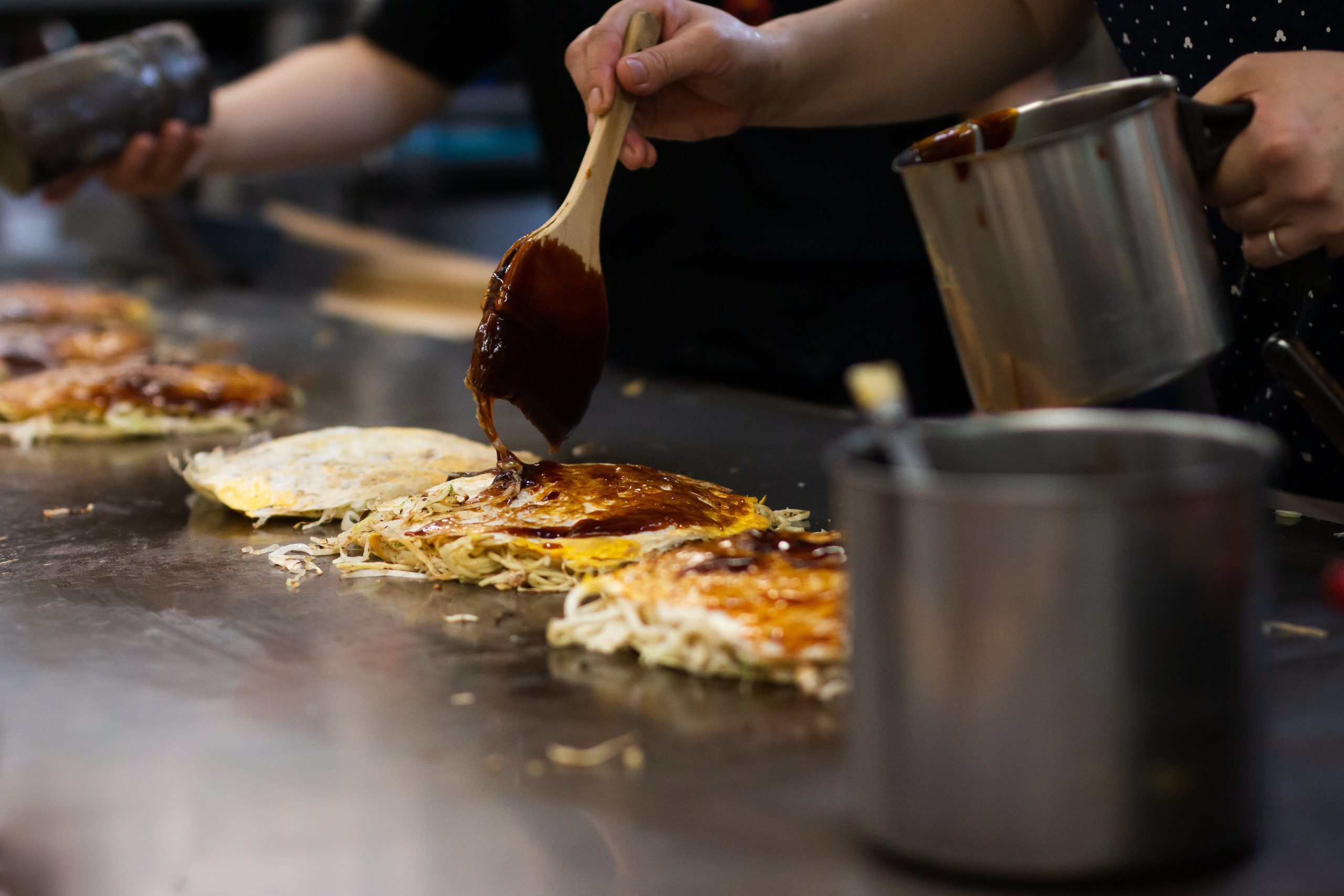
Hiroshima Okonomiyaki.
Expert Tip: Sit at the counter and watch your meal being crafted before you. For an elevated experience, reserve a seat at a top restaurant with river views.
Cultural Note: It’s polite to use the provided small spatula and wait for the chef to serve your portion—embrace this authentic, local custom.
8. Itsukushima Shrine & Floating Torii Gate
The iconic torii gate at Itsukushima Shrine seems to float above the water, a masterpiece of Shinto design. Walk through the shrine’s corridors, explore centuries of ritual, and soak in panoramic views of the inland sea.
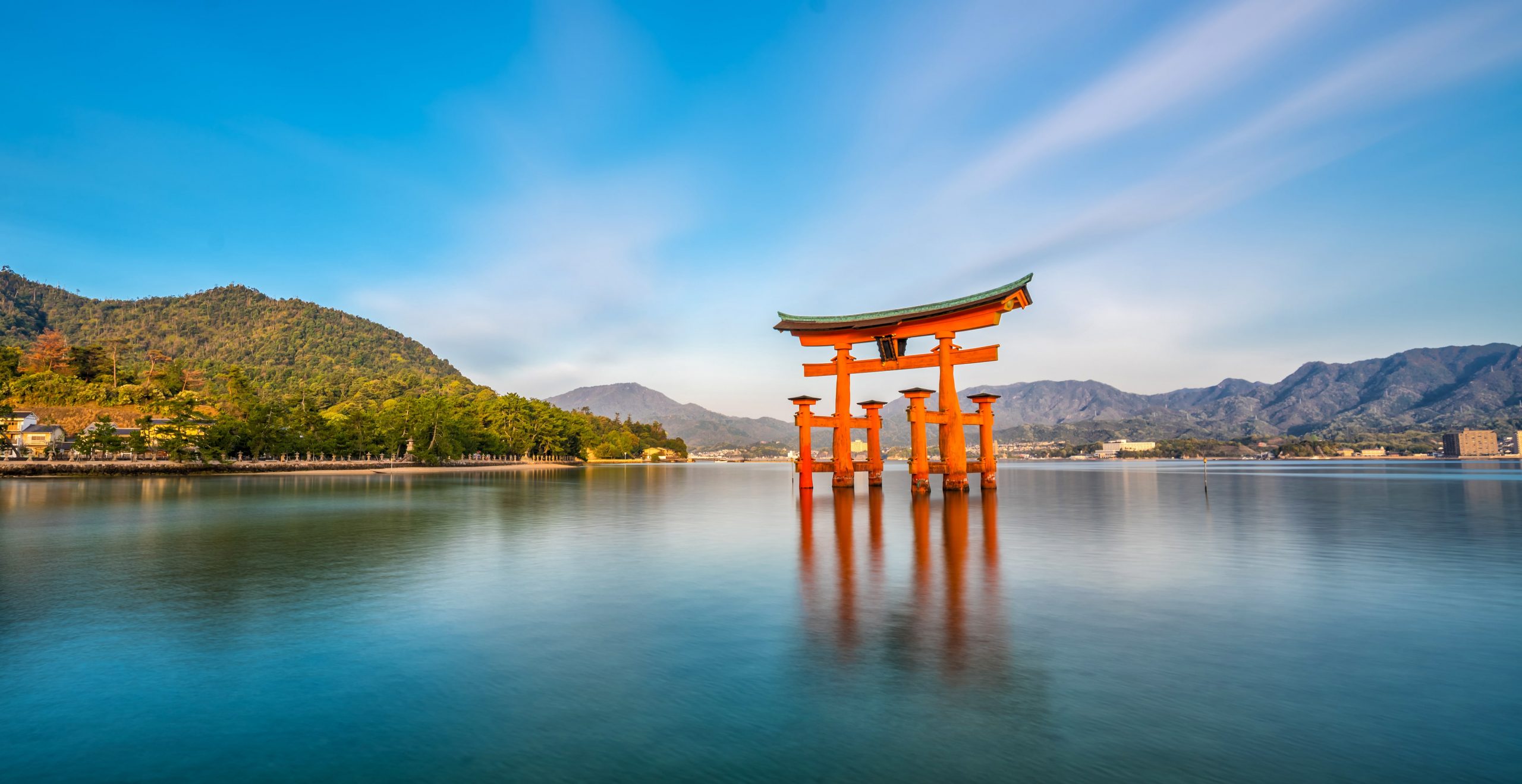
The famous Floating Torii gate.
Expert Tip: Check tide schedules—high tide makes for the most striking photos, while low tide lets you walk right up to the gate. Your guide can help plan this seamlessly.
9. Sandankyo Gorge
A gem in the wider Hiroshima Prefecture, Sandankyo Gorge offers stunning natural beauty with dramatic cliffs, waterfalls, and emerald rivers. Well-marked hiking paths suit both casual walkers and serious adventurers.
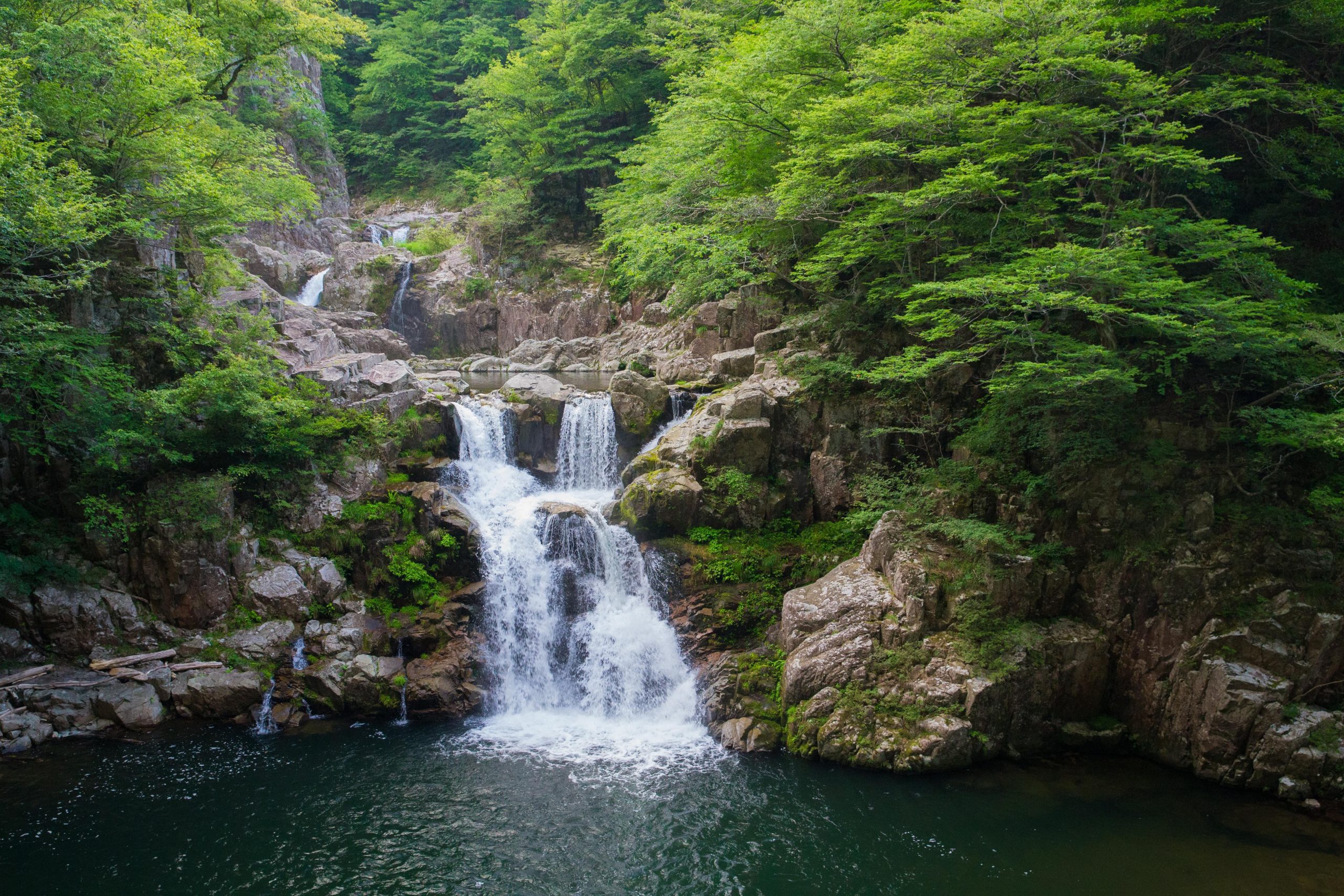
Sandankyo Gorge offers stunning natural beauty with dramatic cliffs and waterfalls.
Expert Tip: Spring and autumn are ideal, but the gorge is beautiful year-round. Luxury transport can bring you here directly, and a guide can help design a route suited to your preferences.
10. Saijō Historic Breweries
The Saijō district is home to some of Japan’s most historic breweries, many dating to the Meiji era. Guided tastings reveal the secrets behind premium sake and introduce you to the subtleties of local craftsmanship.
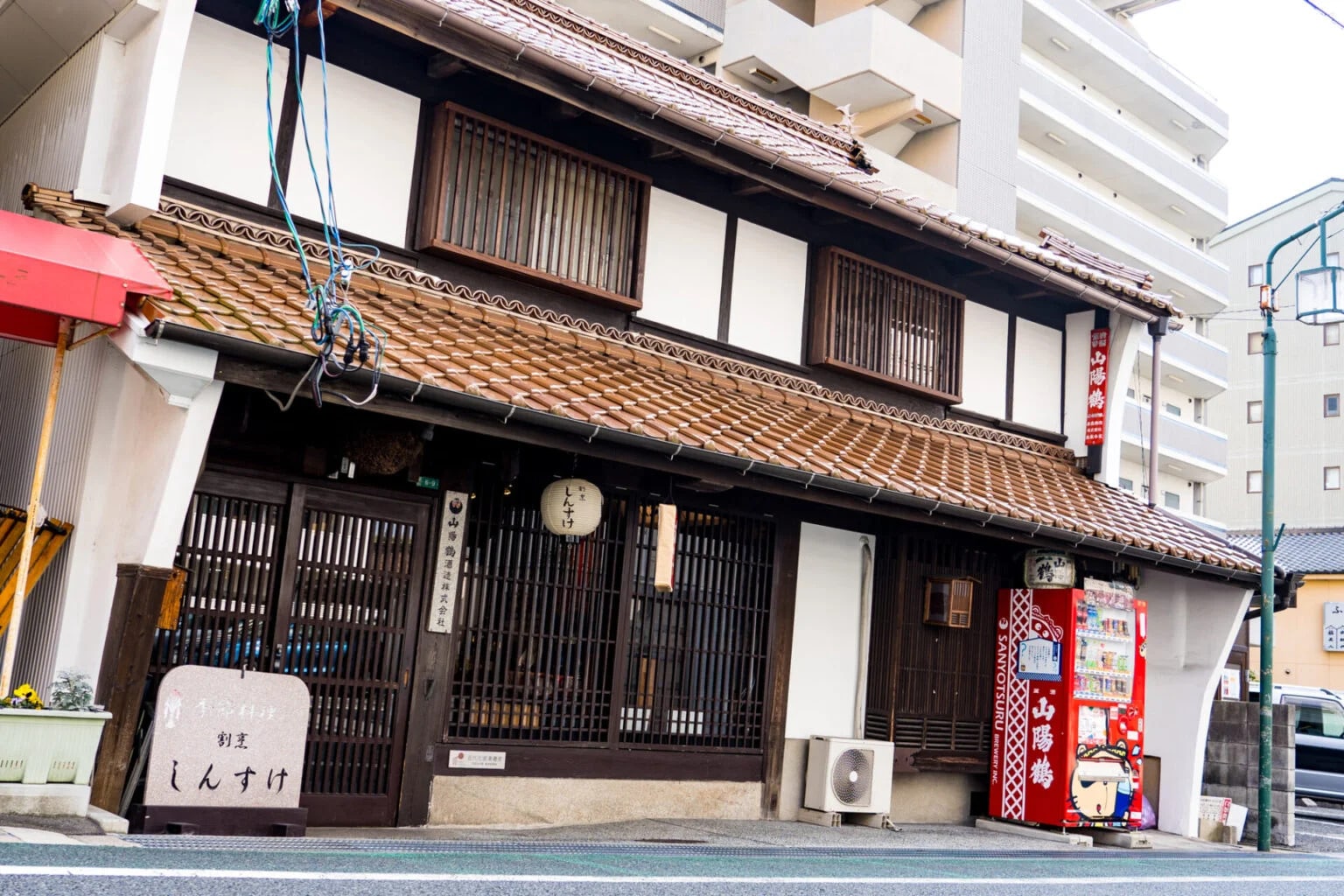
The Saijō district is home to some of Japan’s most historic breweries.
Image source: higashihiroshima-kanko.jp
Expert Tip: Opt for a private sake tour, complete with food pairings and expert guidance. Many breweries are family-run and offer exclusive experiences.
F.A.Qs
Is visiting Hiroshima worth it?
Yes—Hiroshima is a must-visit destination on any trip to Japan. With its moving memorials, world-class food, historic sites, and natural beauty, Hiroshima offers powerful insight into history and an inspiring vision of world peace. It’s both educational and deeply memorable.
What not to miss in Hiroshima?
Don’t miss the Hiroshima Peace Memorial Museum, the Atomic Bomb Dome, Hiroshima Castle, Shukkei-en Garden, and the Children’s Peace Monument. Take a day trip to Miyajima Island to see the Itsukushima Shrine and the floating torii gate. Try Hiroshima-style okonomiyaki for a true local flavour.
Is 2 days in Hiroshima enough?
Two days is perfect for first-time visitors. You’ll have time to explore key sites in the city centre, visit the Peace Park and Museum, and enjoy a day trip to Miyajima Island. For a deeper dive, consider staying longer to explore Sandankyo Gorge or Saijō’s historic breweries.
What should I do in Hiroshima?
Start with Hiroshima Peace Memorial Park and Museum, see the A-Bomb Dome, and stroll Peace Boulevard. Visit Hiroshima Castle and Shukkei-en Garden, and take a ferry to Miyajima Island. Indulge in Hiroshima okonomiyaki and explore local markets, museums, and sake breweries.
Design Your Own Hiroshima Journey
Ready to discover Hiroshima’s landmarks, uncover local secrets, and create memories designed just for you? Whether you’re seeking fun things to do, meaningful connections, or a journey of reflection and renewal, this city offers experiences for every traveller.
Let Designer Journeys be your guide—with expert support, luxury logistics, and personal care, your Hiroshima itinerary will be as seamless as it is inspiring.
Visit Japan in another place? Check out our guide for your best travel inspiration.
